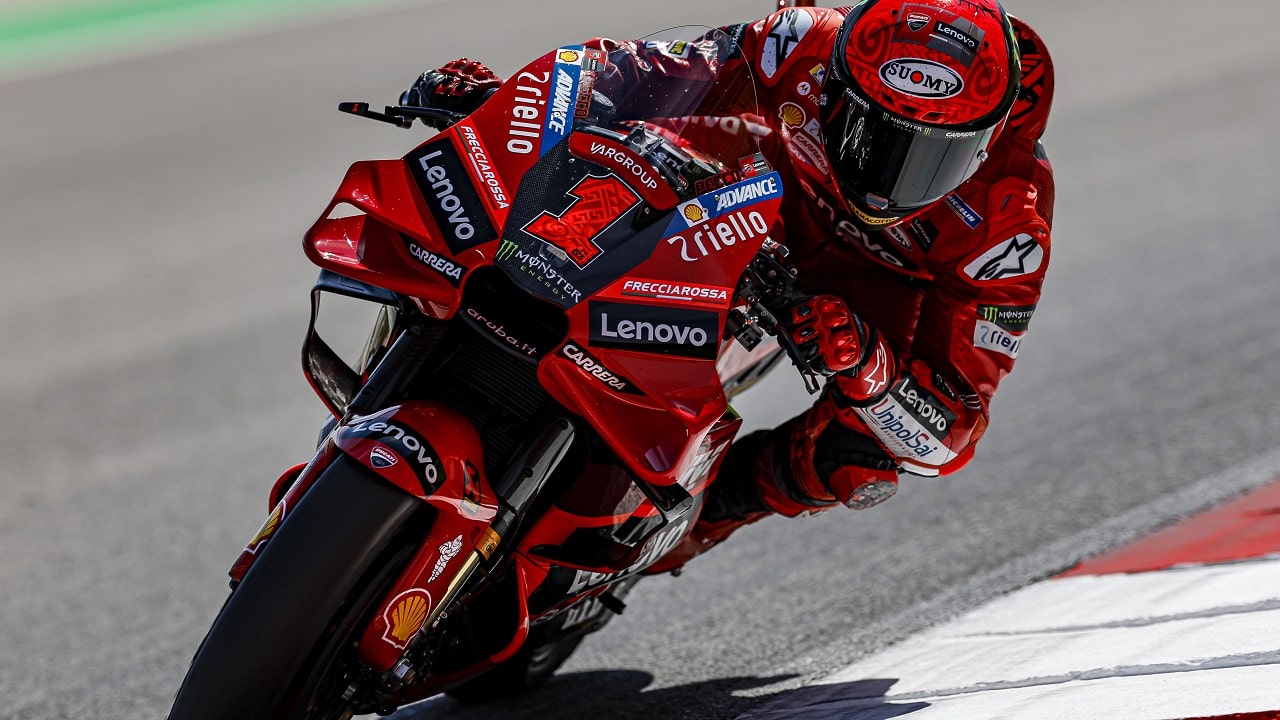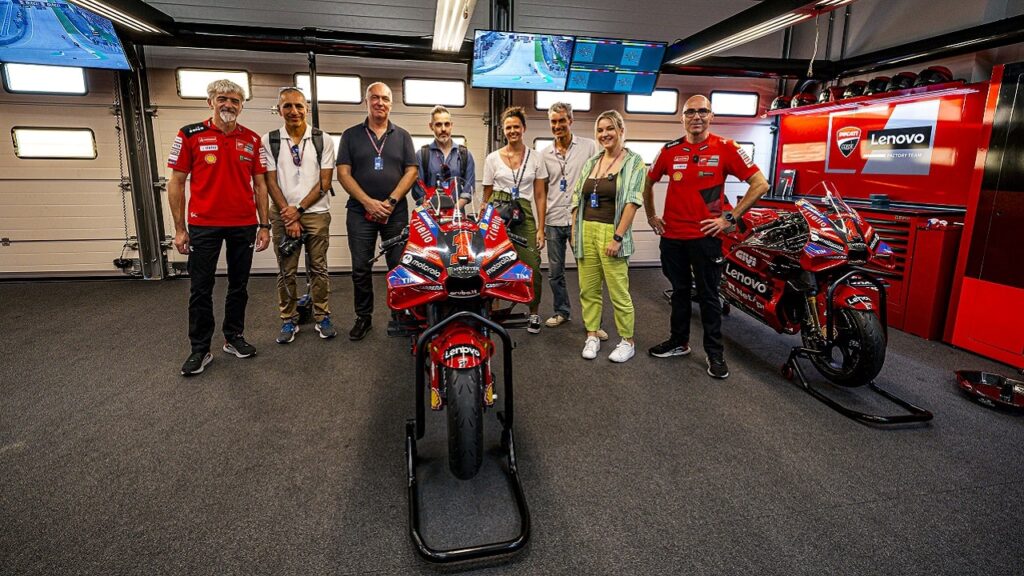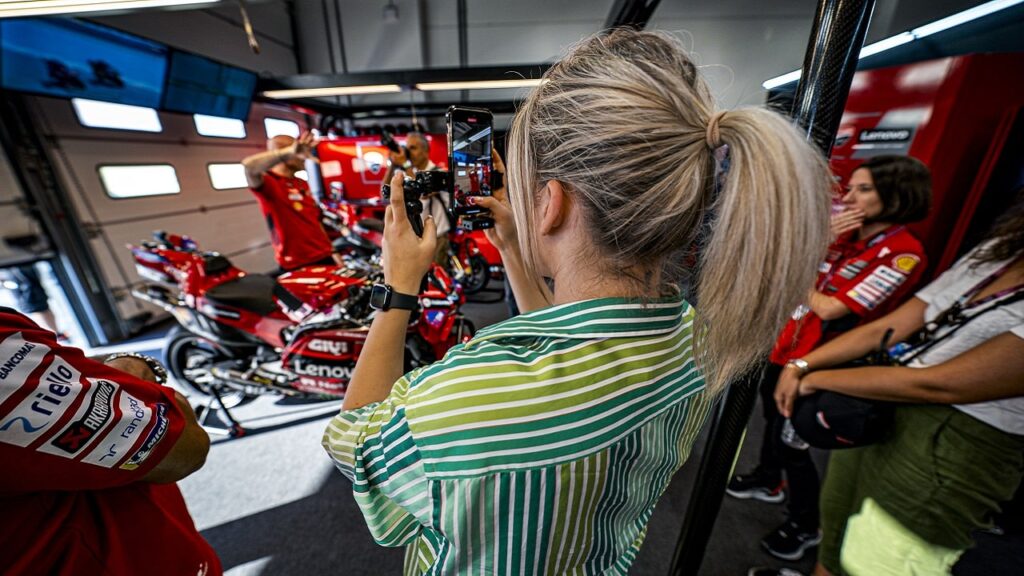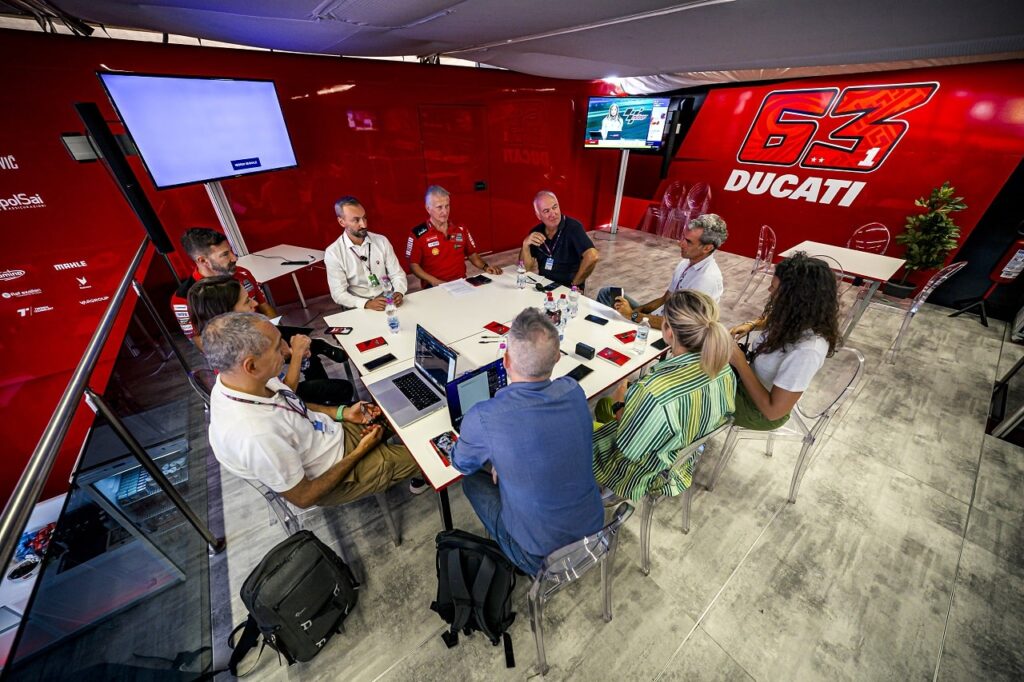The MotoGP it always gives a wave of adrenaline – even to those watching it from home. But it would be impossible control all that enormous power without a lot of technology: from the sensors on the vehicle to the workstations on which to analyze the data, to make winning decisions in qualifying and in the race. We entered the Ducati Lenovo Team box to let us explain how technology makes the difference in racing MotoGP.
In the Ducati Lenovo Team garage: how much technology is there in MotoGP?
The collaboration between Ducati and Lenovo is not limited to simple sponsorship. In MotoGP, have powerful computers and servers to process data faster during qualifications it can make the difference between a pole position and a start on the back row. When every tenth of a second counts, even sensors and workstations can’t wait.
And there are so many sensors and data to analyze, as we have personally seen visiting the Ducati Lenovo Team garage.
The MotoGP garages are the kingdom of riders and engineers. One of them, Gabriele ContiDirector of Electronic Systems at Ducati Corse, answered our questions to remove any doubts from all enthusiasts (both of engines and technology).
A lot of sensors
If those who follow MotoGP only need to know the engine size and recognize the color red to support Ducati, the engineers of the Italian team must instead monitor around sixty sensors, located in every key component of the vehicle.
Conti explains that there are many hidden, but even just in the front wheel you can find several. The dedicated ones to tire temperature and pressure, brake caliper and fork travel they are just the “easiest” ones to identify. But there are others, such as the sensor that signals to the electronic control unit that the pilot is giving gas and what evaluates the braking. Or the speed sensors and the accelerometer.
And then i Lots of sensors on the engine, always working at the limit of power, with microscopic margins of error. Engineers must therefore know the temperature and pressure of water and oil, the temperature of the exhaust gases, and the carburetion.
All these elements and data allow the team to make decisions during the race weekend.
It hasn’t always been this way.
In the past, the pilots depended solely on their own sensations – which the tension of the match could often offset. But now motorbikes have double the horsepower, they are much more complex to ride. Conti sums it up well: “The drivers are as legendary today as yesterday, they are simply in a more technological context. The commitment and courage are exactly the same.”
More checks and decisions to make at 300 per hour
Performance has improved greatly: so to say that “with all that technology the bike drives itself” means underestimating the work that the riders and their teams do every weekend.
The controls and sticks that pilots like Francesco “Pecco” Bagnaia they have in their hands in every race are so many. They have to make a lot of decisions – e.g they have to do it at 300 km/h.
Relying on little information, also because the dashboard display is not easily consultable while bending around a bend or speeding along a straight line.
This is why there is little information on it: times, gear, settings and then errors and problems, also because from the garage, by regulation, they cannot inform him of anything.
In front of a computer – also in the Ducati Lenovo Team
To make these decisions you need to analyze the data collected in the sensors. And since telemetry (therefore “remote” measurement) is not allowed in MotoGP, the Ducati Lenovo Team must connect the bike to a cable. Which although it functions, more or less, like an Ethernet cable, has a patented attachment for use on tanks.
The cable connects the bike to a Lenovo workstationwhich downloads the data and displays it in a dashboard that electrical engineers can consult. Every race weekend, approximately 100GB of data is transmitted by the 8 Ducati Desmosedici GPs on the track. Conti explained to us that over the years MotoGP has wanted to reduce the computing power of the processors inside the bike. So the Ducati Lenovo Team increased the intelligence “around” the racing vehicle.
Even remotely (that’s right, there is smart working in MotoGP too thanks to Ducati Lenovo Remote Garage), the team analyzes the race performance and the driver’s driving, with thousands of parameters analyzed by machine learning. And then develops, with the human contribution of the engineers, race maps that The electronic settings of the bike also radically change.
In testing with the Ducati Lenovo Team
Before starting race practice, engineers upload maps based on the previous year’s races to two bikes, which have different settings and mappings. Then it comes”Pecco” and starts driving both. Once back in the garage, the pilot confronts the chief engineer, giving their impressions of the bike and the track to compare them with the data collected by the sensors. This is for both bikes.
During qualifying, however, times are significantly reduced. You have to download, analyze and reload data very quickly. For this reason, technological power becomes as essential as that of the engine: you have to run as fast in the pits as on the track.
The MotoGP therefore, although made by courageous pilots and thundering engines, it has a truly important technological soul that makes the difference, weekend after weekend. And that takes nothing away from skill of the Ducati Lenovo Team. Indeed, it demonstrates that to win you need to be very fast and precise even in front of a PC display.


















Leave a Reply
View Comments